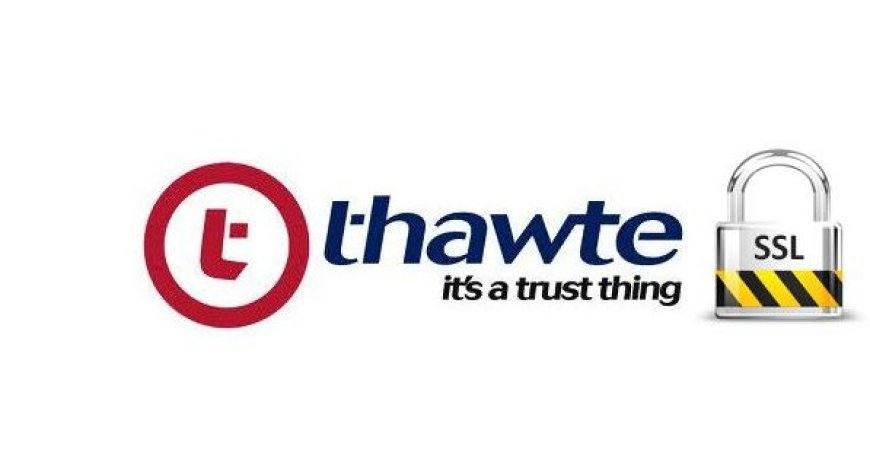In the digital age, securing a website with an SSL certificate is essential for ensuring data integrity, security, and user trust. However, the choice of SSL certificate can also impact your website’s performance. This article examines the impact of RapidSSL and Thawte SSL certificates on website performance, helping you make an informed decision for your business.
Understanding SSL Certificates
SSL (Secure Socket Layer) certificates are cryptographic protocols designed to secure data transmitted between a web server and a user's browser. SSL certificates encrypt data, preventing unauthorized access and ensuring that sensitive information like passwords and credit card numbers remain confidential.
When a user visits a website secured with an SSL certificate, their browser initiates a secure connection through a process known as the SSL handshake. This handshake involves key exchanges and the establishment of a secure communication channel, which can impact website performance.
RapidSSL vs. Thawte SSL Certificates: An Overview
RapidSSL and Thawte are both reputable providers of SSL certificates. RapidSSL is known for its affordability and straightforward approach, making it a popular choice for small to medium-sized businesses. Thawte, on the other hand, is recognized for its robust security features and extensive validation options, often favored by larger enterprises and e-commerce sites.
Key Factors Impacting Website Performance
-
SSL Handshake Speed
- The speed of the SSL handshake is crucial in determining how quickly a secure connection can be established. This process involves several steps, including the exchange of encryption keys and the verification of the SSL certificate by the browser. Faster SSL handshakes lead to quicker page load times.
-
Certificate Chain Length
- The certificate chain includes the SSL certificate itself, any intermediate certificates, and the root certificate. A shorter certificate chain means fewer verification steps, which can improve performance.
-
Key Length and Encryption Strength
- The length of the encryption keys and the strength of the encryption algorithms used can impact performance. Stronger encryption provides better security but can also require more processing power and time.
-
Server Performance and Configuration
- The performance of the web server hosting the SSL certificate and its configuration can influence the impact of the SSL certificate on website performance. Properly configured servers optimized for SSL/TLS can handle encryption and decryption more efficiently.
-
Browser Compatibility
- Compatibility with different browsers and devices ensures that the SSL certificate performs consistently across various platforms, minimizing potential performance issues.
RapidSSL: Performance Impact
1. SSL Handshake Speed:
- RapidSSL certificates are designed for quick and easy implementation, which translates to relatively fast SSL handshake speeds. The simplicity of the RapidSSL certificates often results in a more streamlined handshake process, reducing the time it takes to establish a secure connection.
2. Certificate Chain Length:
- RapidSSL certificates typically have a short certificate chain, with minimal intermediate certificates. This shorter chain can lead to faster verification times during the SSL handshake, enhancing overall performance.
3. Key Length and Encryption Strength:
- RapidSSL uses industry-standard 2048-bit encryption, providing strong security without significantly compromising performance. The balance between security and performance makes RapidSSL a viable option for many websites.
4. Server Performance and Configuration:
- RapidSSL certificates are compatible with most web servers and can be optimized for better performance. Proper server configuration can further minimize the impact of SSL on website speed.
5. Browser Compatibility:
- RapidSSL certificates are widely recognized and compatible with all major browsers and devices, ensuring consistent performance across different platforms.
Thawte: Performance Impact
1. SSL Handshake Speed:
- Thawte SSL certificates are known for their robust security features, which can sometimes lead to slightly longer SSL handshake times compared to simpler certificates like those from RapidSSL. However, Thawte’s optimization techniques mitigate these delays to a large extent.
2. Certificate Chain Length:
- Thawte certificates may have a longer certificate chain due to additional intermediate certificates. While this can enhance security by providing more layers of validation, it can also add a few milliseconds to the SSL handshake process.
3. Key Length and Encryption Strength:
- Thawte offers various SSL certificates, including EV (Extended Validation) certificates that use strong encryption methods. The robust encryption can require more processing power, potentially impacting performance slightly but providing higher security.
4. Server Performance and Configuration:
- Thawte certificates benefit from extensive compatibility and can be optimized for server performance. High-performance servers configured for optimal SSL/TLS handling can effectively manage the demands of Thawte certificates.
5. Browser Compatibility:
- The Thawte SSL certificates have excellent compatibility with a wide range of browsers and devices, ensuring secure connections are established quickly and reliably across different platforms.
Performance Optimization Tips
Regardless of whether you choose RapidSSL or Thawte, there are several ways to optimize your website’s performance when using SSL certificates:
-
Enable HTTP/2:
- HTTP/2 improves the performance of SSL/TLS connections by reducing latency and enabling multiplexing of requests.
-
Use OCSP Stapling:
- OCSP (Online Certificate Status Protocol) stapling reduces the time needed to check the revocation status of an SSL certificate, speeding up the SSL handshake.
-
Optimize Server Configuration:
- Ensure your server is configured for optimal SSL/TLS performance. This includes using the latest protocols, minimizing the certificate chain, and enabling session resumption.
-
Leverage Content Delivery Networks (CDNs):
- CDNs can help distribute the load and reduce latency by serving content from geographically closer servers, enhancing the performance of SSL-enabled websites.
-
Regularly Update and Monitor:
- Keep your SSL certificates and server software up to date. Regular monitoring can help identify and address performance bottlenecks.
Conclusion
Both RapidSSL and Thawte SSL certificates offer excellent security features, but they can impact website performance differently. RapidSSL is known for its simplicity and fast handshake speeds, making it a good choice for small to medium-sized businesses. Thawte, with its robust security features and extensive validation options, is ideal for larger enterprises and e-commerce sites that require higher levels of security, even if it might slightly impact performance.
By understanding these differences and implementing optimization techniques, businesses can ensure that their choice of SSL certificate enhances their website’s performance while providing the necessary security to protect user data and maintain trust.


























